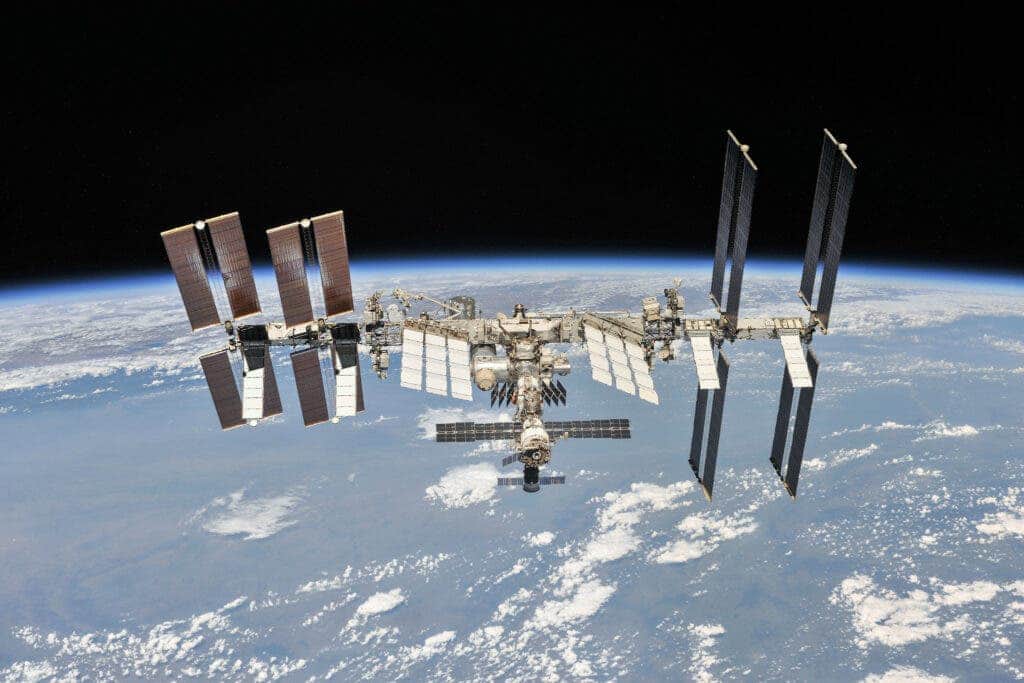
Following Russia’s unprovoked invasion of Ukraine, the White House quickly responded with a fresh set of tough sanctions that aim to isolate the Kremlin from the global financial and trade system. The sanctions also include bans on US-made or US-designed software, technology, and hardware, which are expected to gravely hurt the Russian space program.
Responding to these sanctions, Dmitry Rogozin, the head of Roscosmos, the Russian space agency, made some very weird and questionable comments for a person of his rank.
“If you block cooperation with us, who will save the International Space Station (ISS) from an uncontrolled deorbit and fall into the United States or Europe?” Rogozin said on Twitter.
“There is also the possibility of a 500-tone structure falling on India and China. Do you want to threaten them with such a prospect? The ISS does not fly over Russia, therefore all the risks are yours. Are you ready for them?”
The White House sanction package restricts the Russian military and defense ministry from buying nearly any items made in the United States or manufactured by a foreign country using US-origin software, tech, or equipment. These include semiconductors, lasers, sensors, navigation, avionics and maritime technologies, encryption security, and more.
Rogozin was probably alluding to the Russian-made engines that keep the ISS afloat in Earth’s orbit. These relatively small thrusters are used for speeding up the station or slowing it down, which has the effect of raising or lowering its altitude. They are only needed when it has descended too low because of friction with the (extremely thin) atmosphere roughly 400 km (250 miles) above Earth’s surface, or when it needs to avoid some space junk. The thrusters are also useful when it needs to adjust its altitude to dock with an incoming vessel. Otherwise, they’re shut off.
In light of recent tense developments in Ukraine, Rogozin is obviously being melodramatic and his comments shouldn’t be taken as a threat. Instead, they should be read in the key of: ‘Russia is still a major space power. If you decide to isolate us, you only stand to lose.’
While relations between the US and Russia have always been somewhat rocky, their collaboration at the International Space Station has been commended as a fine example of the kind of amazing things that can happen when two rivals decide to work together rather than against each other. Alongside them are 13 other countries like Canada, Japan, and several European countries who have all made significant contributions to the station.
The station’s first modules were launched in 1998, and since then it has morphed into a sophisticated scientific research facility, spanning the length of a football field. Russia kept station crews coming and going after NASA’s Columbia disaster in 2003 and after the space shuttles retired in 2011. It was only recently, thanks to SpaceX and its reusable rockets and crewed capsules, that NASA has been able to rid itself of its reliance on Russian Soyuz rockets to ferry astronauts and cargo to and from the space station. NASA is also light-years away from Rocscomos in terms of funding and capabilities (NASA landed two rovers on Mars in the decade while Russia is busy with launching some military satellites every now and then), so if anyone would stand to lose from breaking their space alliance, that would clearly be Russia.
But despite the drama and conflict that often plagues international relations between the two major powers on the ground, the ISS has been largely free of these prosaic pursuits.
Scott Pace, who served as executive secretary of the space council under President Donald Trump and is now the director of the Space Policy Institute at George Washington University, said the space station “has been largely isolated” from political events.
“It’s possible to imagine a break with Russia that would endanger the space station, but that would be at the level of a dropping diplomatic relations,” said Pace. “That would be something that would be an utterly last resort so I don’t really see that happening unless there is a wider military confrontation.”
The space station has been largely spared by politics in its nearly 25 years in operation. In January 2031, it will plunge into the waters of Point Nemo, an uninhabited part of the southern Pacific Ocean, where spacecraft and satellites go to die. But the ISS still has 9 more good years of operation ahead of it. That’s plenty of time to do amazing, groundbreaking science. Hopefully, the ISS will be allowed to fulfill this role in peace, although nothing is certain in this shifting geopolitical climate.
Four NASA astronauts, two Russian cosmonauts, and one European astronaut are currently on the space station.






